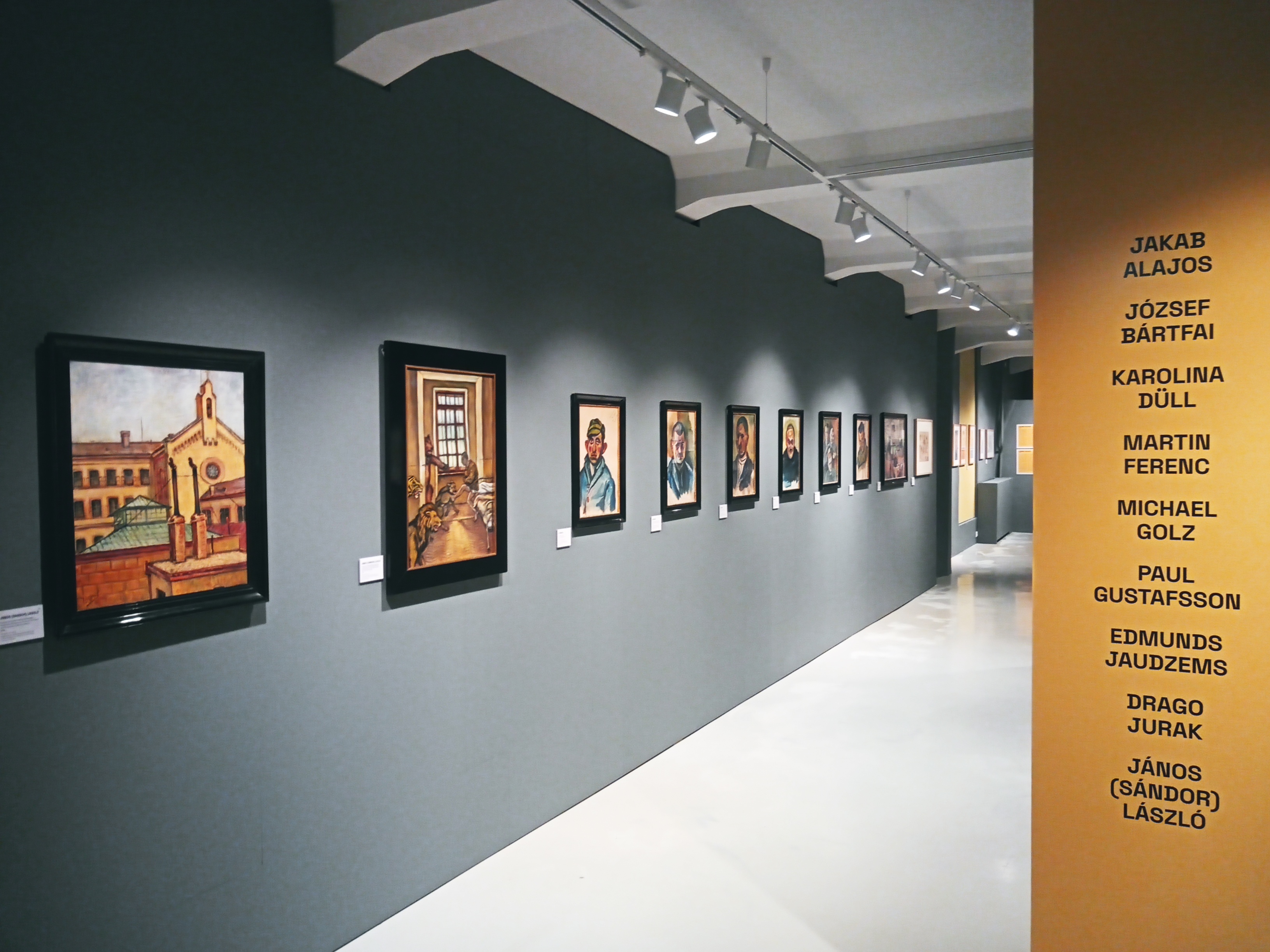The MTA Psychiatric Art Collection will be closed from July 30 to August 25, 2024.
The collection is participating with 39 works in the Estonian exhibition "Hidden Worlds Expanding, Eastern European Outsider Art," which is on view until September 29.

Triple exhibition to present hidden Outsider Art in Eastern Europe
A significant review exhibition Hidden Worlds Expanding. Eastern European Outsider Art is on view in Viljandi, Valga and Tartu in Estonia. Curated by the Kondas Centre and part of the main program of the European Capital of Culture Tartu 2024, the exhibition showcases works from ten countries’ Outsider Art collections that have so far been hidden from the wider public.
The exhibition will be open to the public to 29 September 2024.
According to one of the exhibition’s curators, Mari Vallikivi, the exhibition mainly presents art born in social isolation in psychiatric hospitals or special care homes. “There are also works created during art therapy sessions or under the guidance of instructors. In some cases, art is the only means of communication between the creator and the outside world,” she said.
The exhibition features over 200 works by 59 artists. The focus is on the Outsider Art of Eastern Europe, but they enter into a dialogue with works from several valuable Western European collections. Artists from Austria, Estonia, Croatia, Latvia, Poland, Germany, Serbia, Finland, Czechia and Hungary are presented in the exhibition.
Hidden Worlds Expanding is simultaneously open at the University of Tartu Museum, the Kondas Centre in Viljandi, and Valga Museum. According to Eva Laantee Reintamm, the second curator of the exhibition, the displays in the three cities are conceptually linked, and it is worth visiting all of them to get the whole picture. “On a map, the three cities form an equilateral triangle, each side about 80 kilometres long. It’s hard to say what symbol to look for here, but it could hint at greater equality,” she said.
The University of Tartu Museum shows the earliest layer of the exhibition. The oldest works come from the archives of Tartu University Hospital’s Psychiatry Clinic from the late 19th century, while the central part of the exhibition is from the Psychiatric Art Collection of the Hungarian Academy of Sciences. The best-known authors include Edmund Monsiel, a classic of Polish Outsider Art, and István Pál, also known as “der ungarische van Gogh”, based on his own signature in one of his painting seen in Tartu.
Valga Museum presents a houseful of portraits, focuses on the problems of depicting oneself and others, which is one of the central themes of Outsider Art. The Kondas Centre in Viljandi delves into the mystical origins of creativity, featuring visionaries connecting with the universe and creators who accurately document their surroundings. Among others, the world-renowned Outsider Artists Anna Zemánkova and Cecilie Marková are represented; and early pieces of asylum art from the Psychiatric Art Collection of Hungarian Academy of Sciences as well.
A comprehensive catalogue accompanies the exhibition, which, in addition to the works on display, contains articles on the development of Outsider Art in several countries.
Collections: Silesian Museum in Katowice (Poland), Kondas Centre (Estonia), private collection of Pavel Konečný and collection of Open Art Studio of Masaryk University, Brno (Czechia), Psychiatric Art Collection of HAS (Budapest, Hungary), Art Brut Serbia collection (Serbia), Koprivnica Town Museum (Croatia), Kettuki Ry Art Studio in Hämeenlinna (Finland), Art Cru Gallery (Germany), and Open Studio of Lebenshilfe OÖ in Gmunden (Austria)
Further information:
Mari Vallikivi
Director of Kondas Centre, curator of the exhibition
+372 53 601 768, This email address is being protected from spambots. You need JavaScript enabled to view it. www.kondas.ee


